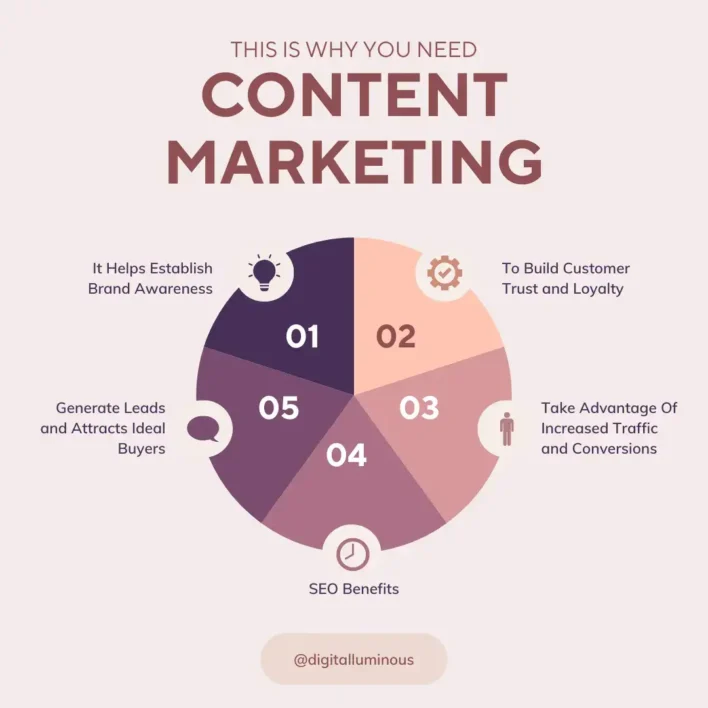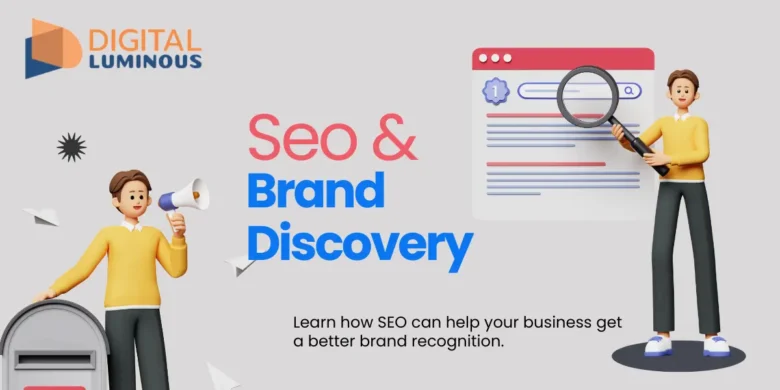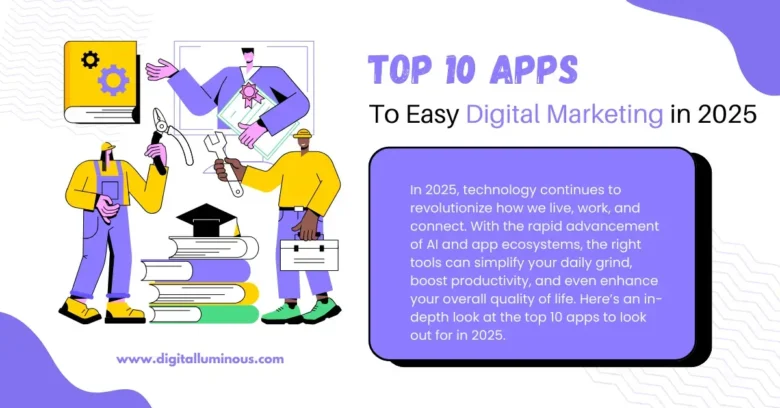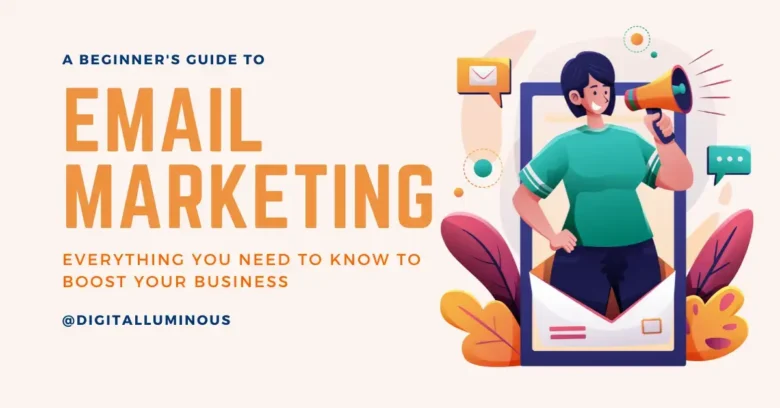
Welcome to the digital era, where content reigns supreme! In today’s hyper-connected world, creating compelling content is not just a nice-to-have but it’s a necessity for businesses looking to thrive online.
Whether you’re a budding entrepreneur, a small business owner, or a marketing enthusiast, understanding the fundamentals of content creation is key to success in the digital landscape.
Understand Content Marketing
Setting the Stage: The shift towards digital marketing and the growing importance of content in online strategies are undeniable.
As consumers increasingly turn to the internet for information, entertainment, and shopping, businesses must adapt by focusing more on digital channels.
This transformation has elevated the role of content as a key driver in attracting, engaging, and retaining customers.
High-quality, relevant content not only helps in building brand awareness and credibility but also plays a crucial role in influencing purchasing decisions and fostering long-term customer relationships.
- Example: Over the past decade, the rise of e-commerce giants like Amazon and the dominance of social media platforms like Facebook, TikTok, and Instagram have transformed how businesses engage with consumers in the USA. Brick-and-mortar stores have increasingly shifted their focus to online channels, recognizing the need to establish a strong digital presence through compelling content.
Defining Content Creation: Explanation of what content creation entails and its significance in today’s digital age.
Content creation encompasses the strategic process of conceptualizing, producing, and distributing content across various digital channels.
It involves crafting narratives, visuals, and interactive experiences that resonate with target audiences and align with business objectives.
In essence, content creation is the art of storytelling in the digital realm—a powerful tool for building brand awareness, fostering customer relationships, and driving conversions.
- Example: A local coffee shop in New York City leverages content creation by regularly posting engaging photos and videos of their specialty drinks on social media platforms like Instagram and TikTok. By showcasing their unique offerings and behind-the-scenes processes, they attract a loyal following of coffee enthusiasts and drive foot traffic to their cafe.
Purpose of the Guide: Outline of the aim of the guide to provide beginners with a comprehensive understanding of content marketing and creation.
The purpose of this guide is to equip beginners with the knowledge and tools needed to navigate the intricacies of content marketing and creation.
By exploring key concepts, best practices, and practical tips, readers will gain insights into how to develop effective content strategies, engage audiences authentically, and achieve measurable results in the digital landscape.
- Example: A startup based in Silicon Valley aims to expand its reach and attract investors by developing a content marketing strategy that highlights its innovative products and industry expertise. Through thought leadership articles, case studies, and multimedia content, the company seeks to position itself as a leader in the tech sector and capture the attention of key stakeholders.
The Benefits of Content Marketing

Brand Awareness: Explanation of how content marketing increases brand visibility and reach online.
One of the primary benefits of content marketing is its ability to increase brand awareness and visibility in the digital realm.
By consistently producing and distributing valuable content, businesses can expand their online presence, attract new audiences, and differentiate themselves from competitors.
Whether through blog posts, social media updates, or multimedia content, engaging storytelling can leave a lasting impression on audiences, positioning brands as authoritative voices within their respective industries.
- Example: A fashion brand headquartered in Los Angeles partners with local influencers and celebrities to create sponsored content showcasing its latest clothing lines. By leveraging the influence and reach of these personalities, the brand significantly expands its online visibility and attracts a broader audience of fashion-forward consumers across the USA.
Customer Trust and Loyalty: Discussion on how valuable content fosters trust and long-term relationships with customers.
In addition to bolstering brand visibility, content marketing plays a crucial role in building trust and fostering long-term relationships with customers.
By providing valuable, relevant content that addresses their needs and interests, businesses can establish themselves as trusted advisors and thought leaders within their niche.
Over time, this trust and loyalty translate into repeat business, brand advocacy, and ultimately, sustainable growth.
- Example: A small business in Chicago specializes in handmade skincare products and prioritizes transparency and authenticity in its content marketing efforts. Through educational blog posts, customer testimonials, and behind-the-scenes videos, the brand establishes trust with consumers by sharing its commitment to quality ingredients and sustainable practices.
Traffic and Conversions: Highlighting how content drives website traffic and facilitates conversions.
Content marketing serves as a powerful driver of website traffic and conversions, guiding audiences through the buyer’s journey and facilitating meaningful interactions along the way.
Whether through informative blog posts that educate prospects, engaging videos that showcase products, or compelling calls-to-action that prompt action, strategically crafted content can lead to increased engagement, higher conversion rates, and ultimately, greater revenue generation.
- Example: An e-commerce retailer based in San Francisco implements a content marketing strategy focused on creating informative product guides and tutorials. By optimizing these guides for relevant keywords and sharing them across social media platforms, the retailer not only attracts organic traffic to its website but also converts visitors into customers through targeted product recommendations and promotions.
SEO Benefits: Touching upon how content creation improves search engine rankings and organic visibility.
Beyond its direct impact on brand awareness and customer relationships, content marketing also offers significant benefits for search engine optimization (SEO).
By producing high-quality, relevant content that resonates with target audiences, businesses can improve their search engine rankings, drive organic traffic to their websites, and enhance their online visibility.
From optimizing keywords to earning backlinks from authoritative sources, content creation is a cornerstone of effective SEO strategies in the digital age.
- Example: A real estate agency operating in Miami invests in content creation by publishing neighborhood guides, market reports, and property listings on its website. By consistently producing high-quality content optimized for local search terms, the agency improves its visibility on search engine results pages (SERPs) and attracts prospective homebuyers and sellers looking for real estate expertise in the Miami area.
Types of Content That Can Help You Win
Written Content: Exploration of various types of written content, such as blog posts, articles, and case studies.
Written content encompasses a wide range of formats, each serving a unique purpose and catering to different audience preferences.
Blog posts, for example, provide opportunities for thought leadership and audience engagement, while articles offer in-depth analysis and commentary on industry trends.
Case studies, on the other hand, showcase real-world examples of success stories and demonstrate the value of products or services in action.
- Example: A law firm in Washington, D.C., produces informative legal articles and whitepapers addressing common legal issues faced by businesses and individuals in the USA. By sharing expert insights and practical advice on topics ranging from intellectual property rights to employment law, the firm establishes itself as a trusted resource for legal guidance among clients and prospects nationwide.
Visual Content: Discussion on the importance of visual content formats like images, videos, and infographics.
Visual content plays a vital role in capturing audience attention and conveying information in a memorable and engaging way.
Images, videos, and infographics are powerful tools for storytelling, allowing businesses to communicate complex ideas and concepts visually.
Whether through eye-catching product photography, informative explainer videos, or data-driven infographics, visual content enhances the overall impact and effectiveness of content marketing efforts.
- Example: A travel agency based in Hawaii curates stunning visual content showcasing the natural beauty and cultural attractions of the Hawaiian Islands. Through captivating videos of scenic landscapes, vibrant images of local cuisine, and interactive maps highlighting must-visit destinations, the agency inspires travelers across the USA to book their next vacation to Hawaii.
Interactive Content: Introduction to interactive content types such as quizzes, polls, and surveys.
Interactive content goes beyond passive consumption, encouraging audiences to actively engage and participate in the content experience.
Quizzes, polls, surveys, and interactive calculators are just a few examples of interactive content formats that can captivate audiences, drive engagement, and gather valuable insights into audience preferences and behaviors.
By fostering two-way communication and personalization, interactive content creates memorable experiences that leave a lasting impression on audiences.
- Example: A fitness studio chain with locations across the USA engages its audience through interactive quizzes and fitness challenges on its website and social media platforms. By encouraging participants to assess their health and fitness goals, track their progress, and share their results with friends, the studio fosters community engagement and strengthens brand loyalty among fitness enthusiasts nationwide.
Examples and Use Cases: Providing examples of businesses effectively using each type of content to engage their audience.
Across industries, businesses are leveraging various types of content to engage audiences, drive brand awareness, and achieve business objectives.
From lifestyle brands using visually stunning imagery to tech companies producing informative how-to videos, the possibilities are endless.
By studying real-world examples and use cases, aspiring content creators can gain inspiration and insights into effective content strategies that resonate with their target audiences.
- Example: A technology company headquartered in Silicon Valley showcases customer success stories and product demonstrations through video testimonials and case studies. By highlighting real-world applications and tangible benefits of its products, the company builds credibility and trust with prospective customers across industries, driving demand and generating leads for its solutions.
How to Create Compelling Content?

Audience Research: Guidance through the process of conducting audience research to gain insights into their preferences and behaviors.
Audience research is the foundation of effective content creation, providing invaluable insights into the needs, interests, and behaviors of target audiences.
By analyzing demographic data, conducting surveys, and monitoring social media conversations, businesses can develop a deep understanding of their audience personas and tailor content to meet their specific needs and preferences.
- Example: A nonprofit organization in New York City conducts surveys and focus groups to better understand the interests and concerns of its donors and supporters across the USA. By collecting feedback on fundraising campaigns, volunteer opportunities, and advocacy initiatives, the organization tailors its content strategies to resonate with its diverse audience and drive meaningful engagement.
Content Planning: Discussion on the importance of developing a content strategy and planning content topics and formats in advance.
Content planning involves developing a strategic roadmap for content creation and distribution, aligning with business goals and audience needs.
By establishing clear objectives, identifying key topics and themes, and defining content formats and channels, businesses can ensure consistency, coherence, and relevance across their content initiatives.
Effective content planning lays the groundwork for successful content marketing campaigns and maximizes the impact and effectiveness of content efforts.
- Example: A financial services firm in Chicago develops a content calendar outlining monthly themes and topics for its blog, social media, and email marketing campaigns. By aligning content initiatives with key events such as tax season, retirement planning seminars, and investment webinars, the firm maintains relevance and consistency in its messaging and effectively engages clients and prospects throughout the year.
Writing Tips: Offering practical writing tips, such as using compelling headlines, storytelling techniques, and clear calls-to-action.
Effective writing is essential for capturing audience attention, conveying information persuasively, and driving desired actions.
By employing compelling headlines, engaging storytelling techniques, and clear calls-to-action, content creators can create content that resonates with audiences and inspires them to take meaningful actions.
Whether crafting blog posts, social media updates, or email newsletters, mastering the art of writing is critical for success in content marketing.
- Example: A food blog based in San Francisco captivates readers with mouthwatering recipe titles, engaging storytelling, and clear instructions for preparing delicious meals at home. By incorporating personal anecdotes, culinary tips, and enticing visuals into each blog post, the blogger creates a memorable and immersive experience for food enthusiasts across the USA, driving repeat visits and social shares.
Visual Design: Touching upon the significance of visual design elements in enhancing the appeal and effectiveness of content.
Visual design plays a crucial role in enhancing the appeal and effectiveness of content, capturing audience attention and conveying information in a visually compelling way.
From typography and color schemes to layout and imagery, visual design elements contribute to the overall aesthetics and user experience of content assets.
By investing in high-quality visuals and adhering to design best practices, businesses can elevate the impact and effectiveness of their content marketing efforts and create memorable brand experiences for their audiences.
- Example: An interior design firm in Los Angeles showcases its portfolio of residential and commercial projects through visually stunning before-and-after photos and 3D renderings. By highlighting the aesthetic transformation and attention to detail in each design project, the firm attracts prospective clients seeking inspiration and expertise in creating beautiful living and workspaces in Southern California.
How to Measure Success of Content Marketing?

Setting Goals: Discussion on the importance of setting SMART goals for content marketing efforts. Setting clear and measurable goals is essential for guiding content marketing efforts, tracking progress, and evaluating success.
SMART goals—specific, measurable, achievable, relevant, and time-bound—provide a framework for defining objectives, establishing benchmarks, and aligning content initiatives with business priorities.
By setting realistic and actionable goals, businesses can focus their efforts, measure their performance, and optimize their content strategies for maximum impact and effectiveness.
- Example: A software company in Seattle sets SMART goals for its content marketing campaigns, aiming to increase website traffic by 20% and generate 100 new leads within six months. By establishing specific, measurable targets aligned with business objectives, the company can track progress, evaluate performance, and adjust strategies to achieve desired outcomes effectively.
Analytics Tools: Introduction of popular analytics tools for tracking content performance.
Analytics tools play a crucial role in measuring the effectiveness of content marketing efforts, providing valuable insights into audience behavior, content performance, and campaign effectiveness.
From website analytics platforms like Google Analytics to social media insights tools and email marketing platforms, businesses have access to a wide range of analytics tools that enable them to track key metrics, monitor performance trends, and derive actionable insights to inform content strategy and optimization efforts.
- Example: A marketing agency in Boston utilizes Google Analytics and social media insights to monitor the performance of client campaigns and track key metrics such as website traffic, engagement rates, and conversion rates. By leveraging data from analytics tools, the agency gains valuable insights into audience behavior and content effectiveness, enabling informed decision-making and optimization of marketing strategies for clients across various industries.
Interpreting Data: Interpreting data fuels informed decisions, fine-tunes content strategies, and boosts ROI in content marketing.
Analyzing metrics like website traffic, engagement, conversions, and customer lifetime value reveals audience preferences and campaign effectiveness.
By spotting trends and seizing opportunities, businesses optimize strategies, allocate resources wisely, and achieve superior outcomes.
- Example: An e-commerce retailer in San Diego analyzes website traffic patterns and customer behavior data to identify opportunities for improving the online shopping experience. By tracking metrics such as bounce rate, time on page, and conversion funnel abandonment, the retailer gains insights into user preferences, pain points, and purchasing behavior, enabling iterative improvements to website design, product offerings, and marketing messaging to drive higher conversion rates and customer satisfaction.
Iterative Improvement: Content marketing is a continuous journey of fine-tuning and improvement.
It’s about experimenting with new ideas, analyzing what works, and making adjustments along the way. By staying flexible and responsive to changes in the market and the preferences of your audience, you can refine your strategies to drive better outcomes.
Utilizing data-driven insights and feedback from your audience helps you stay on track and continuously enhance your content initiatives, ultimately helping you achieve your business goals more effectively.Top of Form
- Example: A healthcare organization in Philadelphia conducts A/B tests on email subject lines, content layouts, and call-to-action buttons to optimize engagement and conversion rates for its patient education campaigns. By experimenting with different content formats, messaging strategies, and delivery timings, the organization identifies winning variations and iteratively improves its email marketing efforts to deliver more personalized, relevant, and effective communication to patients and caregivers across the USA.
Congratulations! Armed with the knowledge and insights shared in this guide, you’re well-equipped to create compelling content that resonates with your audience and drives meaningful engagement. Happy creating!
FAQs
What is content marketing, and why is it important?
Content marketing involves creating and distributing valuable content to attract and engage a target audience. It’s essential because it helps businesses build brand awareness, establish authority, and drive customer engagement and loyalty.
What types of content can I create for my marketing strategy?
You can create various types of content, including blog posts, videos, infographics, podcasts, eBooks, case studies, and social media posts. The key is to choose formats that resonate with your audience and align with your marketing goals.
How do I identify my target audience for content marketing?
Start by defining your ideal customer personas based on demographics, interests, challenges, and preferences. Conduct market research, analyze customer data, and engage with your audience on social media to gain insights into their needs and behaviors.
What are the benefits of having a content marketing strategy?
A content marketing strategy helps businesses attract and retain customers, increase brand visibility, drive website traffic, generate leads, boost sales, and build long-term relationships with their audience.
How do I measure the success of my content marketing efforts?
Key metrics to track include website traffic, engagement rates, conversion rates, social media metrics, email open and click-through rates, and customer retention rates. Use analytics tools to monitor these metrics and evaluate the effectiveness of your content.
What are some best practices for creating high-quality content?
Focus on providing value to your audience, be authentic and transparent, maintain consistency in your messaging and branding, optimize content for search engines, use visuals to enhance engagement, and encourage audience interaction and feedback.
How often should I publish content?
The frequency of content publishing depends on your resources, audience preferences, and the nature of your business. Aim for consistency rather than frequency, and prioritize quality over quantity.
How can I repurpose content to maximize its value?
You can repurpose content by adapting it into different formats or distributing it across various channels. For example, you can turn a blog post into a video, an eBook into a series of social media posts, or a webinar into a podcast.
What are some common content marketing mistakes to avoid?
Avoiding common mistakes such as neglecting audience research, lack of consistency, not optimizing content for SEO, being too promotional, neglecting analytics, and failing to adapt to changes in trends and audience preferences.
How do I come up with content ideas?
Generate content ideas by addressing common customer questions and pain points, conducting keyword research, monitoring industry trends, repurposing existing content, and engaging with your audience through surveys, polls, and social media interactions.
What are some effective ways to promote my content?
Promote your content through various channels, including social media, email newsletters, influencer partnerships, guest blogging, content syndication, and paid advertising. Tailor your promotion strategy to your target audience and platform preferences.
What role does storytelling play in content marketing?
Storytelling humanizes your brand, engages your audience on an emotional level, and makes your content more memorable and relatable. Use storytelling techniques to convey your brand’s values, share customer success stories, and connect with your audience authentically.
How do I stay updated on content marketing trends and best practices?
Stay updated on content marketing trends by following industry blogs, attending webinars and conferences, joining professional networking groups, and participating in online communities. Continuously learn from case studies, experiments, and insights shared by industry experts.
What is evergreen content, and why is it valuable?
Evergreen content is timeless and remains relevant to your audience over time. It provides long-term value, attracts consistent traffic, and helps establish your authority and expertise in your niche.
How can I create content that resonates with my audience?
Create audience-centric content by understanding your audience’s needs, interests, and pain points. Personalize your content, use language and tone that resonates with your audience, and address their specific challenges and aspirations.
What are some effective content distribution strategies?
Distribute your content through owned, earned, and paid channels. Focus on building a strong presence on platforms where your audience spends their time, collaborate with influencers and industry partners, and invest in targeted advertising to reach new audiences.
How do I stay consistent with my content creation efforts?
Develop a content calendar or schedule to plan and organize your content creation efforts. Set realistic goals, allocate resources effectively, and establish accountability mechanisms to ensure consistency in publishing content.
How can I leverage user-generated content in my marketing strategy?
Encourage your audience to create and share content related to your brand or products. Showcase user-generated content on your website and social media channels, and engage with your audience by acknowledging and rewarding their contributions.


